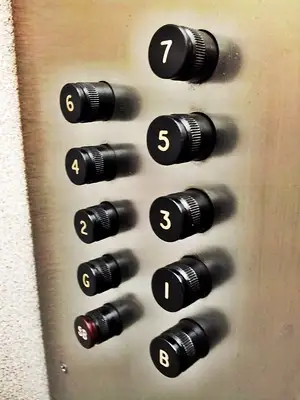The elevator – a machine we have learnt to trust

From back in the times when I lived in Egypt, I still remember the lifts operated by elevator operators at government buildings. Liftmen used to ask politely for the desired floor, press the right button, and then sit back on their little chair. Since the 1850s, elevators have transported passengers with the help of such operators. Back then, a person used to take control of a machine to transcend altitude within a few seconds.
Behind the heavy elevator machinery lies a hidden computer chip that runs a twofold logic: That who presses a calling button is put at the end of a waiting list and will be served depending on the current direction of the lift. It is a simple if-this-then-that logic which is the foundation of all software programs. But does the machine decide who to serve next, or is the collective of people ordering the elevator? Either way, this basic rule set replaced thousands of elevator operators and put humans out of the loop.
Nowadays, we all use elevators daily without giving it any thought. Still, history has shown that it took us quite a while to get used to entering an elevator – an enclosed space hanging on a steel cable. The famous "elevator music" was invented to calm and relax passengers to trust and relax in such an autonomous machine.
To understand the upcoming transformations through artificial intelligence, we can learn a lot from the different stages of algorithms leading to shifts long before the Internet. The next level of algorithms will have more profound consequences regarding trust and similar effects on job replacement.